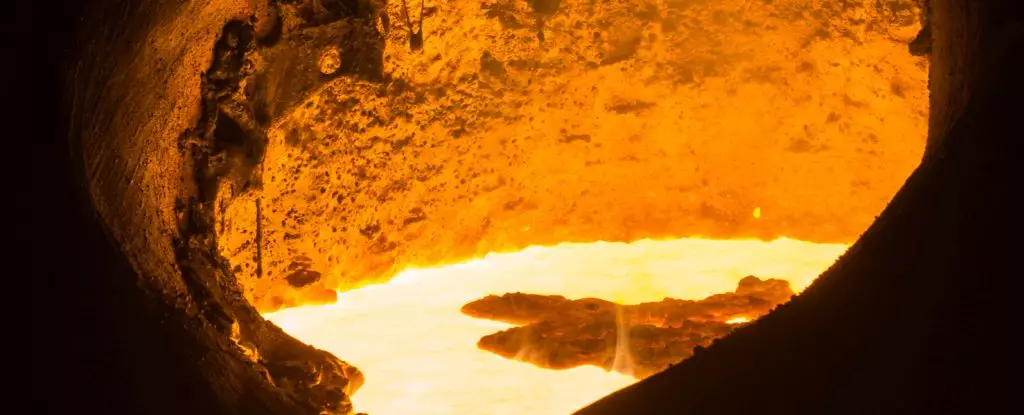Recent scientific explorations have thrust us into a fascinating reality: our planet is cradling an enormous treasure trove, a literal golden bounty that remains primarily undiscovered. This notion may initially strike one as whimsical, but cutting-edge research unveils that the Earth’s core is not merely a fiery ball of iron; it is, in fact, a vault filled with precious metals—most notably, gold. Leaked isotopes from volcanic rocks in the mantle reveal an astonishing truth: gold, alongside other precious metals, is seeping into the Earth’s crust from deep within. This process, dubbed by some scientists as “Nature’s slow leak,” is emblematic of our planet’s complex geological processes—a reminder of the enigmatic beauty harbored beneath our feet.
The Great Gold Heist: What’s at Stake?
It is easy to romanticize the idea of gold lying just beneath the surface, but the scientific revelations regarding Earth’s makeup carry broader implications. For instance, it is suggested that more than 99% of gold is sequestered within the metallic core—enough gold to envelop the entirety of Earth’s landmass to a depth of 20 inches. Such staggering numbers evoke a sense of urgency; are we complacently standing upon our planet’s wealth without a thought to its future? The research led by geochemist Nils Messling and his colleagues at Göttingen University presents an exhilarating hypothesis, yet it also poses significant ethical and economic questions. Are we prepared to exploit these latent riches, or do we have a responsibility to protect them?
The existential dichotomy of resource greed versus environmental stewardship must not be taken lightly, particularly in a world where the consequences of mining endeavors can be dire. New mining technologies may open doors to extraction possibilities, but at what cost to our planet? The dream of boundless riches could easily morph into an environmental nightmare.
The Isotope Connection: Bridging Core and Crust
The marriage of geology and isotopic analysis shines a powerful light on this subject. The breakthrough discovery regarding ruthenium isotopes in volcanic rock is a crucial pivot point in understanding our planet’s inner workings. Messling’s team has ingeniously employed advanced analytical methods to identify variances in ruthenium isotopes that can definitively trace their lineage to the Earth’s core. This critical insight opens up an entirely new dimension at the intersection of geology and resource extraction strategies.
One cannot help but marvel at the implications of this finding. If we extrapolate this discovery to other siderophile elements like palladium and rhodium, we begin to unveil a treasure map that could potentially alter our perspectives on resource allocation. Yet, it forces us to confront the intricate balance between the eager human pursuit of wealth and the global imperative for sustainable practices.
The Future of Gold: A Double-Edged Sword
The concept of gold leaking from the core pits human ambition against a backdrop of profound geological time. While the idea of redefining our approach to gold and other resources is exhilarating, it is also complex. Presenting the core as a dynamic and interconnected system, as researchers like Matthias Willbold suggest, drives home the idea that our engagement with Earth’s resources must evolve. We cannot blindly march toward extraction without contemplating the long-term implications for both our environment and humanity.
As discussions emerge around the future of precious metals in the context of climate change and sustainable innovation, we must be mindful of our role as stewards rather than mere consumers. This exploration of our planet’s hidden potential demands a recalibrated worldview, one where the excitement of unearthing golden treasures is tempered by an unwavering commitment to protecting our mighty Earth.
In essence, as we uncover these science-backed insights, we should remember that with great power comes immense responsibility. The Earth’s core may be leaking out precious metals, but it should not serve as a green light for unchecked exploitation; instead, it invites us to engage in thoughtful stewardship that connects our ambitions with the health of our planet.

Leave a Reply